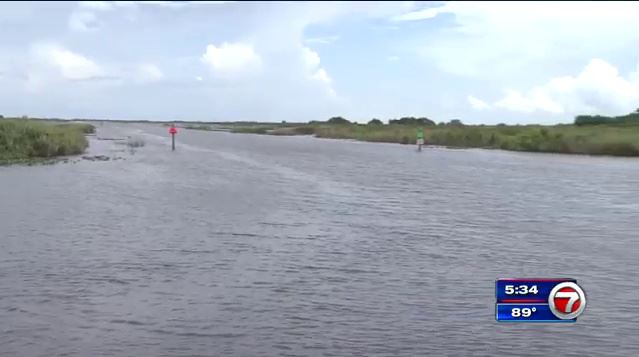TALLAHASSEE, Fla. (AP) — A plan to build reservoirs south of Florida’s Lake Okeechobee to treat polluted water before it flows downstream became law Tuesday as Republican Gov. Rick Scott signed that and 10 other bills.
The Lake Okeechobee bill is an ambitious $1.5 billion plan that aims to prevent algae blooms that have been harmful to the environment and tourism. It was a top priority for Senate President Joe Negron, whose district has been plagued by algae often described as guacamole-thick.
“After twenty years of talking, southern storage is finally becoming a reality,” Negron said in a press release. “We are well on our way to putting the harmful discharges from Lake Okeechobee into the pages of history, instead of the front pages of daily newspapers.”
Among the other bills Scott signed were measures that will allow therapy dogs for children serving as witnesses in abuse trials, let police officers review body camera video before filing reports or responding to investigations, create statewide regulations for rideshare services like Uber and create a public records exemption to protect the identity of people who witness murders.
The bill dealing with Lake Okeechobee was one of the biggest issues of the legislative session that ended Monday and will help address the problem of nutrients in the water that create algae blooms in some Florida rivers and estuaries.
The proposal is to build a 240,000-acre-feet reservoir system (78.2 billion gallons or 296 billion liters) to treat nutrients. It received pushback from the sugar and agricultural industries throughout the vetting process. The powerful industries, which often give hundreds of thousands of dollars in campaign contributions to Florida politicians, feared thousands of acres of farmland would be taken out of production to move way for the reservoir. The law now prohibits the state from taking private land to build the project.
Nutrients from farms, yard fertilizers and septic systems have increased phosphorus levels in the lake, which are sent downstream when lake levels get too high for the dike that surrounds it to handle. Those nutrients then create the algae blooms that suck oxygen out of the water and harm wildlife.
Copyright 2024 The Associated Press. All rights reserved. This material may not be published, broadcast, rewritten or redistributed.

